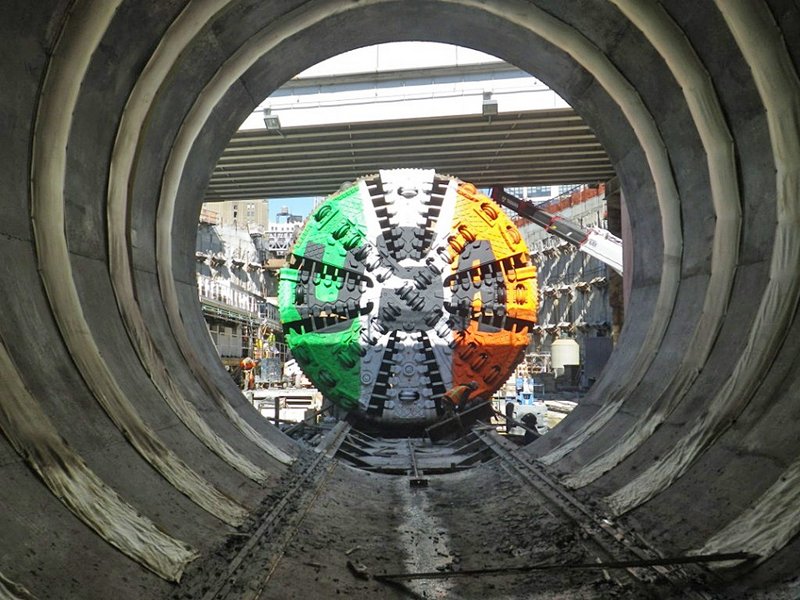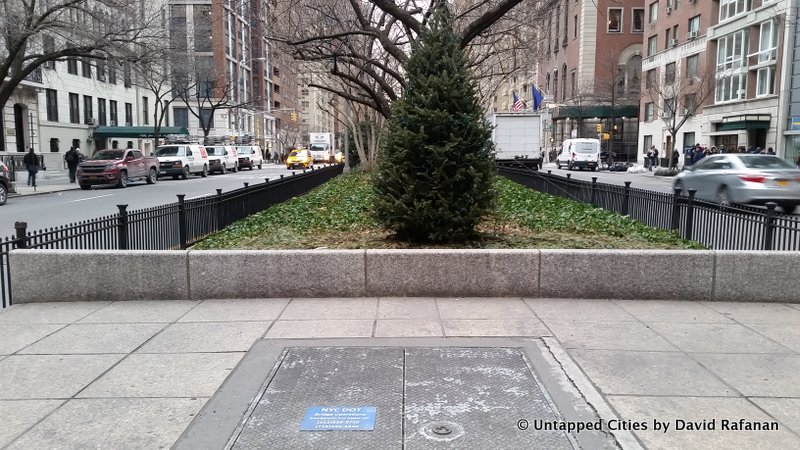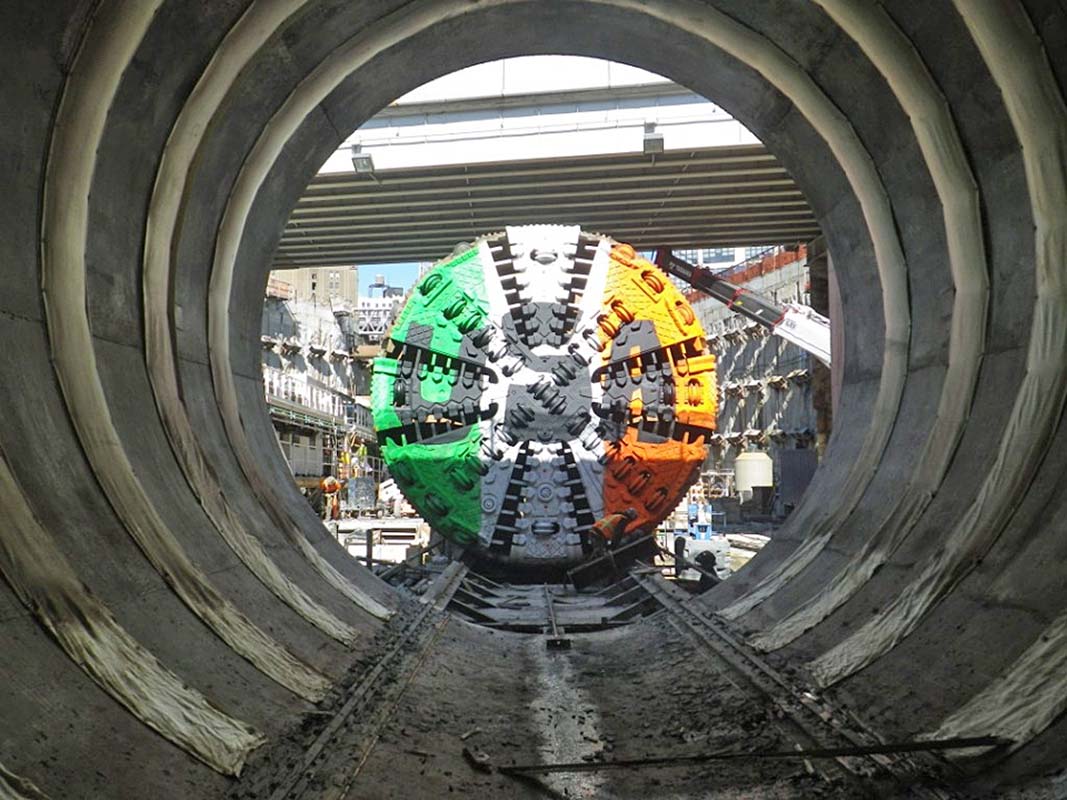Fourteen stories beneath the median on Park Avenue between 37th and 38th Streets lies one of the gargantuan machines that dug the tunnels for the East Side Access – the project to bring the Long Island Railroad to Grand Central Terminal. Seli, the nickname for the tunnel boring machine that rests in Manhattan’s bedrock, was one of seven similar 200-ton machines that were used on the Second Avenue Subway, 7 Line Extension and East Side Access.
Seli had 45 rotating discs, coated with tungsten carbide that can cut through Manhattan schist
Each tunnel boring machine had a nickname, some named by students, two for MTA officials’ granddaughters, two for Mayor Bloomberg’s daughters Emma and Georgina. The rest of the machines were scrapped (with one sent on a new project elsewhere in the United States), but Seli, named after the Italian manufacturer, was buried in situ.
 One of the East Side Access tunnel boring machines in 2012. Photo via Flickr by MTA.
One of the East Side Access tunnel boring machines in 2012. Photo via Flickr by MTA.
Burial of such a large machine was unprecedented in New York City, but is common practice abroad, reported the New York Times in 2011. The Spanish contracting company working on the project deemed it would be more cost effective to leave Seli in place. It was estimated that removal would cost millions and cause delays in existing construction projects. Dr. Michael Horodniceanu, the president of MTA Capital Construction, estimated at the time it would cost $9 million to remove Seli, which had cost somewhere between $6 to $8 million new.
Seli was sealed off and the chamber filled in concrete in a ceremony in July 2011 with a plaque to denote Seli’s final resting place. Above ground however, there’s nothing to denote its presence.

Perhaps one of our enterprising readers will create a plaque on the median for Seli.
Next, discover 10 fun facts about the Second Avenue Subway.






